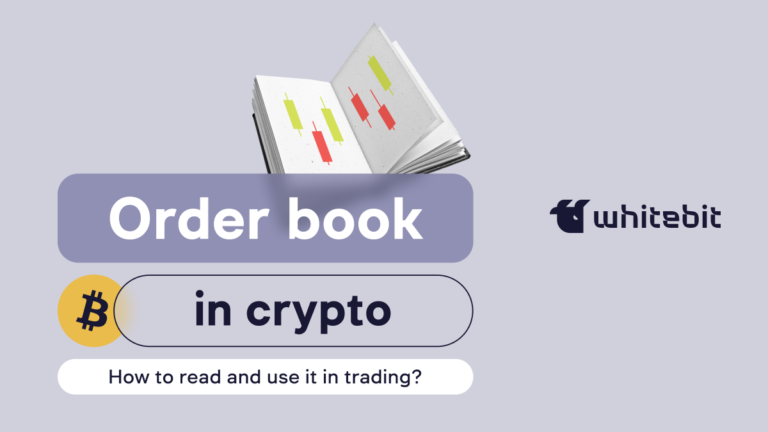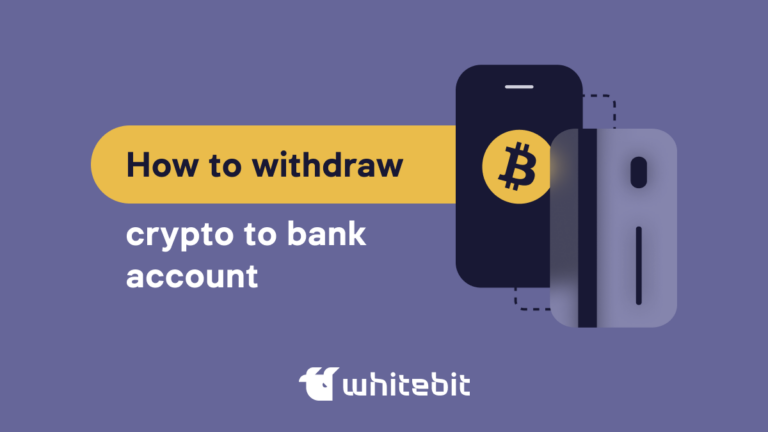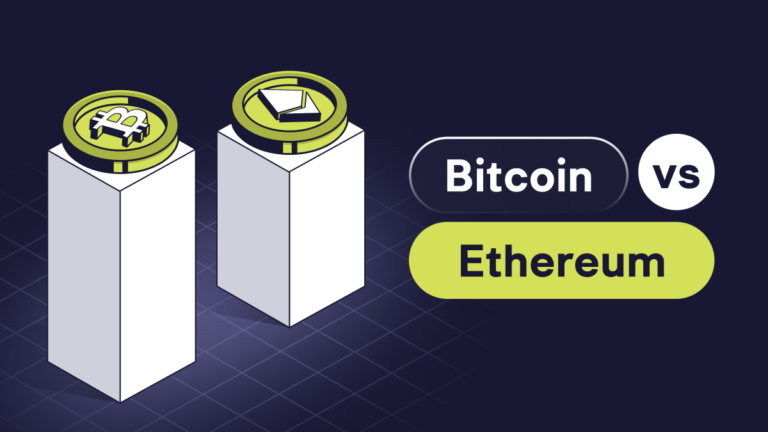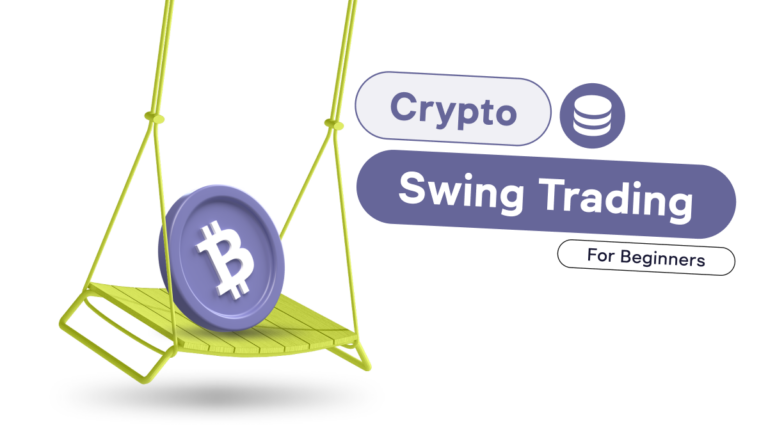What is Spot Trading in Crypto, And How Does It Work?

Content
The “Spot” is one of the primary markets on an exchange. Many beginners start their journey in cryptocurrency with it. In this article, we will discuss what crypto spot trading is, how it differs from margin and futures trading, and the advantages and disadvantages of this approach.
What is Spot Trading in Cryptocurrency?
In simple terms, cryptocurrency spot trading involves buying and selling cryptocurrencies at the current market price, right here and right now.
In this context, “spot” refers to the physical exchange of assets at the present moment, where the asset changes ownership. This contrasts with derivatives like futures, where the transaction occurs at a future date.
The spot market allows you to enter into a transaction where, for example, you buy a certain amount of cryptocurrency, and the seller immediately sells it to you. This exchange happens instantly, allowing both parties to acquire their desired assets swiftly in real-time. Therefore, trading in the cryptocurrency spot market enables the instantaneous acquisition and sale of digital assets without using futures or other derivative instruments.
How Does Crypto Spot Trading Work?
Spot trading is called so because transaction settlements occur “on the spot,” meaning immediately. Additionally, this concept often involves the roles of sellers, buyers, and an order book.
It’s simple. Sellers place an order with a specific selling price (known as the Ask), while buyers enter an order to purchase an asset at a particular buying price (known as the Bid). The asking price is the highest price a buyer is willing to pay, and the bid price is the lowest price a seller is willing to accept as payment.
Orders and offers are recorded in an order book with two sides: the bid side for buyers and the ask side for sellers. For instance, when a user places an order to buy BTC, this transaction is instantly recorded on the order book’s bid side. When a seller offers the exact specification, the order is automatically executed. The green (bids) orders represent potential buyers, while those in red (asks) represent potential sellers.
To learn more about What is an application book? What does its structure consist of? And how to read it? In the article “What is a stock ticker?”
Types of Crypto Spot Market
The spot market can be divided into two main types: exchange-traded and Over-the-Counter (OTC) trading.
Centralized Spot Exchanges (CEX)
— CEXs are operated by one central organization that controls all trading operations and is responsible for the custody of participants’ funds.
— In a CEX, transactions are processed by matching the orders (orders) of buyers and sellers, allowing them to execute an exchange of assets. This way, the exchange centralizes and manages the transaction process, ensuring that orders are executed under specified conditions.
— As CEX is responsible for the security of your funds, you will be asked to go through a Know Your Customer (KYC) process. This requires you to provide personal and financial information to the exchange. This helps reduce the risks of fraud.
— CEXs like WhiteBIT accept national currencies. Therefore, you can deposit and withdraw money in your local currency, simplifying the crypto exchange process.
— CEXs usually offer higher liquidity than DEXs. This means these exchanges have more participants and trading volume, contributing to narrow spreads and more favorable prices when buying and selling.
Decentralized spot exchanges (DEX)
— DEXs, unlike CEXs, are platforms where users can exchange cryptocurrencies and other assets directly with each other, bypassing intermediaries.
— They are typically blockchain and smart contract-based, which means that transactions are managed and processed on a decentralized network rather than on central servers. This increases the security and resilience of the system, as it is not dependent on a single organization.
— In addition, on DEX, users have full control over their private keys and full responsibility for their safety. They do not transfer their assets to the exchange for safekeeping, which reduces the risk of hacker attacks or other types of fraud.
— DEX does not require registration and KYC, but you must connect your Web3 wallet, taking all precautions.
— A wide range of cryptocurrency assets are available on DEX, and their number is growing with the development of decentralized networks. However, they are not as carefully screened as CEX usually is, so it is possible to encounter fraud.
— Also, it’s important to remember that on decentralized exchanges, commissions are tied to the use of the blockchain network, which can lead to different commission models than on centralized exchanges.
— More often than not, liquidity is lower on DEX, especially for less popular tokens and trading pairs.
OTC
OTC trading. Imagine two people who want to trade cryptocurrency directly without the involvement of intermediaries. They can agree on the price and the method of payment. OTC is the very first form of cryptocurrency trading. A vivid example of an OTC transaction takes us back to 2010 when a programmer named Laszlo Hanyecz exchanged 10,000 BTC for two pizzas.
Now, OTC trading has taken on a different scale. It is being used for large transactions. Unlike trading on exchanges, where many small transactions are needed to conduct one such transaction, OTC clients are limited to one significant transaction, making the process efficient and anonymous, as the transaction is not publicly displayed.
Pros and Cons of Crypto Spot Trading
Like any trading method, spot trading cryptocurrency has its advantages and disadvantages.
Pros
- Simplicity: This market is suitable for both medium and long-term investment strategies. You can hold the cryptocurrency for a long time and wait for the price to rise without worrying about contract expiration dates, commissions for holding a position, etc.
This is one of the critical differences between crypto spot trade and futures trade.
- Liquidity and Speed: It allows you to sell an asset quickly and easily without affecting its market price. You can open and close a trade at any time. This makes it possible to react quickly to rate movements and make profits.
- Transparency: Spot market prices are based on real-time market data and are governed by supply and demand. You don’t need complex knowledge of finance or derivatives to get started in spot trading. You can get started based on the basic principles of trading.
Cons
- No leverage: Spot trading does not provide such a tool, meaning you only need to trade on your capital. Yes, on the one hand, this reduces the probable profits, but on the other hand, it can reduce losses.
- Impossibility to open short positions: In other words, you cannot make money on falling prices. So, it becomes more challenging to make money during a bear market.
- No hedging: You cannot use spot trading to hedge price movements in the market as you can with derivatives.
Spot Trading on WhiteBIT
As we have already learned, spot trading is a fundamental market to master at the beginning of your journey into the world of cryptocurrency. Let’s take WhiteBIT as an example and see how to start trading:
- First, register on the WhiteBIT exchange, pass verification-KYC, connect 2FA, and fund your account in digital assets or local currency. To accomplish this, go to the “Balances” tab and select “Main,” then click “Deposit” next to the desired digital asset.
You can read more about how to replenish the balance in the national currency in the article “All methods of replenishing the national currency on WhiteBIT.” Besides, you can replenish your balance on the exchange using Web3-wallet.
- To exchange currency, you need to open the “Balances” tab and transfer the asset from the “General” balance to the “Trading” balance.
You can read about what types of balances exist on the WhiteBIT exchange in the article “Balances on WhiteBIT.”
- Then, you must exchange your national currency/cryptocurrency for any digital currency you need. You can use the “Exchange” section or go straight to “Spot” to do this.
The “Exchange” section is suitable for novice users, while the “Spot” section provides a unique trading terminal where you can choose additional tools for exchange.
- To exchange one currency for another, select in the “Exchange” section which currency you want to “Give” and which currency you want to “Receive.” Click the “Continue” button and read the terms and conditions.
- To exchange currency in the “Spot” section, select the appropriate trading pair in the trading terminal, then the type of order (Market, Limit, Stop-Market, Stop-Limit, Multi-Limit, etc.). For Market – enter the amount of the asset. For Limit – the amount and price at which you want to buy/sell the asset.
We recommend reading about what types of orders exist in the article: “Trading on WhiteBIT for Beginners.”
- You click “Buy” or “Sell,” depending on the trade. Then check the details of the order and confirm it.
Best-Bid-Offer (BBO) for the Most Profitable Order Execution
Best-Bid-Offer (BBO) is a trading feature that is extremely useful in spot trading. BBO determines the highest price at which someone is willing to buy an asset and the lowest price at which someone is willing to sell an asset, helping traders quickly execute deals on the most favorable terms at that moment.
When placing an order with the BBO function on WhiteBIT, the system determines the most favorable price using two different methods: “Counterparty” and “Queue.”
- “Counterparty” method: The system sets the price of the order at the best available market price level in the opposite direction.
Example: If a trader places a buy order, the price of the order will be set at the level of the lowest current selling price (ask) in the order book. In the case of a sell order, the price of the order will be set at the level of the highest purchase price (bid) in the order book.
- “Queue” method: In this case, the system sets the price of the order at the best price on the same side of the market as the order itself.
Example: In the case of a buy order, the price of the order will be set at the level of the highest current purchase price (bid) in the order book. For a sell order, the order price will be set at the lowest ask price in the order book.
Crypto Spot Trading vs. Margin Trading: What’s the Difference?
| Spot | Margin | |
| Profit | In a bull market, provided, the price of the asset rises. | In both bull and bear markets, provided, the price of an asset rises or falls. |
| Leverage | Not available | Available |
| Equity | Requires the full amount to purchase assets physically. | Requires only a fraction of the amount to open a leveraged position. On margin trading, the maximum leverage is 10x. |
Spot trading vs. margin trading chart
How does margin trading work? Details, technical points, examples, and tips – all this you will find in our article: “Margin Trading on WhiteBIT.”
Spot Crypto Trading vs. Futures Trading
| Spot | Futures | |
| Availability of Asset | Purchasing real cryptocurrency assets. | Purchasing contracts based on cryptocurrency’s price, with no physical transfer of assets. |
| Profit | In a bull market, provided, the price of the asset rises. | In both bull and bear markets, provided, the price of an asset rises or falls. |
| Principle | Buy an asset cheaply and sell it expensively. | Betting on the upside or downside of an asset’s price without actually buying it. |
| Time horizon | Long Term / Medium Term Investments. | Short-term speculation, which can range from minutes to days. |
| Leverage | Not available | Available |
| Equity | Requires the full amount to purchase assets physically. | Requires only a fraction of the amount to open a leveraged position. On futures trading, the maximum leverage is 100x. |
Сrypto Spot Trading vs. Crypto Futures Trading Chart
Is Crypto Spot Trading Profitable?
Spot trading can be lucrative for investors with a well-thought-out strategy, understanding market trends, and seeing the right time to buy and sell assets.
Profitability is mainly influenced by:
- Volatility. This means that prices can fluctuate wildly in a short period, leading to significant gains and losses.
- Skills and Knowledge. Successful cryptocurrency trading requires good market knowledge, analysis, and strategic thinking. Technical and fundamental analysis skills can help in making informed decisions.
- Strategy. An approach that aligns with investment objectives and risks is essential in trading profitability.
To summarize, spot cryptocurrency trading requires risk management skills, discipline, and patience, as this type of trading is primarily designed for those who believe in cryptocurrency’s long-term and medium-term potential.
The Bottom Line
Every day, exchanges improve their tools, providing convenient conditions for different market players. Although spot trading is simple, if you want to make it your primary income, you must have a clear strategy and stick to it no matter what.
FAQ
What is spot crypto trading? The concept of “trading” tells us the purpose of buying and selling. In other words, it is a method of trading. Buying cryptocurrency is an action that aims to own the asset.
Spot trading is not limited to a specific investment period. Depending on the trader's investment objectives and strategy, it can be long-term, medium-term, or short-term.
You should consider several parameters: safety, legality, reputation, and availability of support. There are several important factors to consider:
Start by researching the reputation and history of the exchange. Find out how many years it has been in operation and how successful it has been. Make sure the exchange takes all the necessary measures to protect your funds.
Make sure the relevant authorities regulate the exchange. Regulation adds extra layers of protection and transparency. Check what trading pairs are available on the exchange.
Examine the trading terms and conditions, such as commissions on the exchange. Evaluate the availability and quality of the support service. Furthermore, evaluate the design and interface of the exchange.
You can use technical analysis (TA) in your spot trade crypto strategy. TA involves analyzing and interpreting past price movements and trading volumes to predict future price changes. It can be helpful for trading strategy: identifying entry and exit points, establishing Take-Profit (TP) and Stop-Loss (SL), and determining overall market trends.
TA is not an infallible tool; it can only sometimes predict future price movements accurately. Combining TA with fundamental analysis (FA) is also recommended for a more comprehensive market view.
Spot trading crypto means buying cryptocurrencies at a lower price and selling them at a higher price. Successful trading involves diligent research, technical analysis, and keeping up with market trends. Developing a clear strategy, managing risks, and having a disciplined approach are crucial to profit from spot trading.
Taxation depends on the jurisdiction and local laws. Most countries treat cryptocurrencies as digital assets, and taxation may vary depending on the types of transactions and the time the assets have been held. Be sure to properly familiarize yourself with your country or region's tax laws and regulations to account for liabilities and avoid unforeseen problems.










